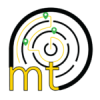Let's give a look on what is DAM and MAM and who wins the digital battle.
DAM and MAM are two different systems used in the management of digital assets, such as images, videos, audio files, and other media content. Here's an overview of DAM (Digital Asset Management) and MAM (Media Asset Management) systems:
Digital Asset Management (DAM): DAM systems are designed to store, organize, retrieve, and distribute digital assets within an organization. These assets can include images, videos, documents, presentations, and other multimedia files. DAM focuses on managing the entire lifecycle of digital assets, from creation to archiving or deletion.
Key features of DAM systems include:
- Asset storage and organization: DAM systems provide a centralized repository for storing and organizing digital assets, often with metadata and tagging capabilities.
- Search and retrieval: Users can easily search for and retrieve specific assets based on keywords, tags, or other metadata.
- Version control: DAM systems typically track different versions of an asset, allowing users to access previous versions or compare changes.
- Rights management: DAM systems often include features for managing usage rights, permissions, and licensing information for assets.
- Collaboration and workflow: DAM systems facilitate collaboration among team members, allowing them to share, review, and approve assets within defined workflows.
- Distribution and publishing: DAM systems can distribute assets to various channels, such as websites, social media platforms, or print publications.
Overall, DAM systems focus on managing a wide range of digital assets across the organization and ensuring their efficient organization, retrieval, and distribution.
Media Asset Management (MAM): MAM systems are specialized subsets of DAM systems that specifically focus on managing media assets, such as videos, audio files, and related content. MAM systems often have advanced capabilities for handling the complex workflows and requirements associated with media production and distribution.
Key features of MAM systems include:
- Video editing and transcoding: MAM systems may include built-in tools for basic video editing and transcoding, allowing users to modify and convert media assets.
- Integration with editing software: MAM systems often integrate with professional video editing software, enabling seamless collaboration and asset sharing between editing teams.
- Metadata management: MAM systems provide robust metadata capabilities to organize and categorize media assets based on various criteria, such as format, resolution, duration, or scene descriptions.
- File format support: MAM systems are optimized to handle various media file formats and codecs commonly used in the broadcasting and media production industry.
- Media distribution: MAM systems facilitate the distribution of media assets to multiple platforms, including television, streaming services, websites, and social media channels.
- Rights and clearance management: MAM systems assist in managing rights and clearances for media assets, ensuring compliance with copyright and licensing requirements.
MAM systems are often employed by media production companies, broadcasters, and other organizations involved in the creation, management, and distribution of media content.
In summary, while DAM systems provide a broader scope for managing all types of digital assets, MAM systems are more specialized and tailored to the specific needs of media production and distribution workflows.
